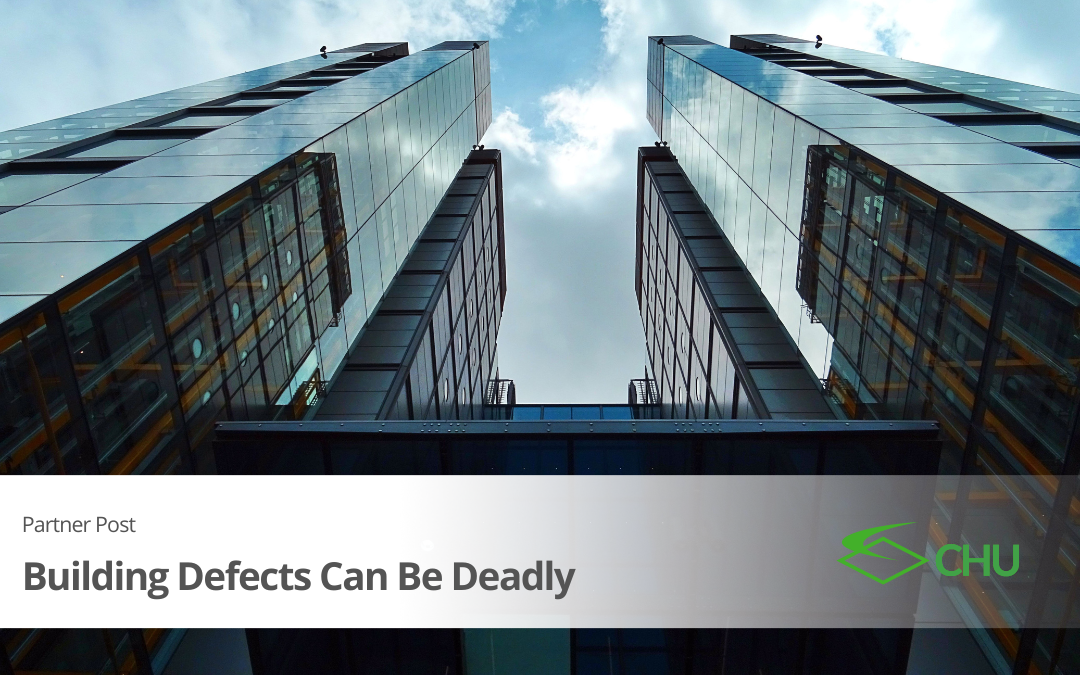This month, CHU Underwriting Agencies share the importance of a well maintained building and how serious building defects can be.
Early on 24th June 2021 half of the 13-story building, Champlain Towers South, in Miami fell away. A total of 98 people died in what may be the deadliest accidental building collapse in American history.
Authorities are still gathering evidence for investigations into what triggered the collapse. While the cause remains undetermined, a 2018 engineering report found structural deficiencies that were now the focus of several inquiries, including a grand jury probe. The disaster has prompted officials across South Florida to study residential buildings for signs of poor construction or structural weaknesses.
Closer to home hundreds of residents were evacuated from the newly built Opal Tower in Sydney on Christmas Eve 2018 after gaping cracks were found in the building, sparking fears it could collapse. Several defects were discovered and even just last March inspectors from the state’s building regulator found that several aluminium sunshades on the building’s facade were incorrectly fixed and could be a danger to residents if they were to dislodge.
The issue of building defects continues to haunt property owners in Australia, particularly strata owners.
According to UNSW’s City Futures Research Centre, some 85 per cent of owners’ corporations have identified major defects in their buildings.
While we haven’t had a disaster like the Miami tower collapse building defects may compromise the safety of the occupants and building. For an owner, it may have personal financial implications and potential exposure to legal action.
It also has implications about the insurance coverage of the building. Most insurance contracts have exclusions in relation to defects, both known and unknown.
Identify, rectify
It’s vital to identify and rectify defects. Rectification will maximise accessibility to insurance coverage and avoid the risk of a claim being denied due to known defects or defective parts.
So how can you identify them?
There are a number of sources of valuable information to determine the extent and severity of the defect, such as:
Professional reports
Reports from professionals including like an engineer’s report or similar or a builder’s scope of works to rectify the defects.
Building contracts
If a building contract exists, it will provide details on the work required to rectify the defect and the value of remedial works.
The contract value of works is also important as most insurance policies have exclusions for building works exceeding a certain value.
Keep the building up to scratch
It’s also particularly important for owners to keep their properties in good repair and condition. Regular maintenance can prevent building defects occurring.
Responsibility for property maintenance will ultimately depend on who actually owns or is responsible for the property – the individual apartment / lot owner or all owners together. Generally, individual apartment owners are responsible for maintaining inside their individual lots, and the body corporate is responsible for maintaining the building and anything classified as common property. The body corporate should have a structured maintenance plan in place. This includes developing a maintenance cycle to inspect common property, carry out maintenance requirements, regularly survey residents about maintenance issues, and ensure maintenance is an agenda item at every annual general meeting. A strata manager is often engaged to help with this and other strata management responsibilities on behalf of the body corporate.
Poorly maintained strata properties greatly increase the risk of an accident or safety hazard.
There have been a few cases where the body corporate has been aware of major defects but ignored rectifying them. Existing defects may not be covered under a scheme’s strata insurance policy, resulting with owners being held liable and left with large, unforeseen expenses.
We haven’t seen the sort of disaster that struck the Miami tower, but building defects remain a critical issue for new and old builds in Australia. We truly hope that we never see this type of event on home soil but if defects are not rectified, it could result in the building insurance being hard to place or even uninsurable. In this case, strata owners may be liable for any property damage or injury to others.
Disclaimer: CHU Underwriting Agencies Pty Ltd (ABN 18 001 580 070, AFS Licence No: 243261) acts under a binding authority as agent of the insurer QBE Insurance (Australia) Limited (ABN 78 003 191 035, AFS Licence No: 239545). Terms, conditions, limits, deductibles and exclusions apply to the products referred to above. Any advice in this article is general advice only and has been prepared without taking into account your objectives, financial situation or needs. Before making a decision to acquire any product(s) or to continue to hold any product, we recommend that you consider whether it is appropriate for your circumstances and read the relevant Product Disclosure Statement (‘PDS’), Financial Services Guide (‘FSG’) and the Target Market Determination (‘TMD’) which can either be viewed at www.chu.com.au or obtained by contacting CHU directly on 1300 361 263.
